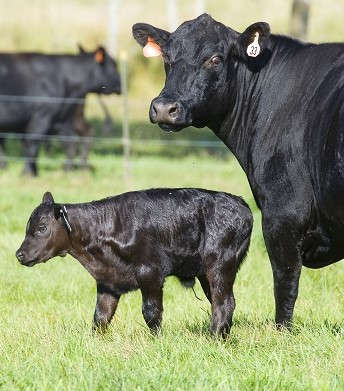By Beth Doran

Cold and wet weather have added to the calving challenges of Iowa cow-calf producers. Iowa State University Extension and Outreach beef specialist Beth Doran said both are ideal conditions for contributing to calf scours.
“There’s no magic bullet in preventing calf scours, but one key is to provide a clean, dry and draft-free environment,” she said. “That is tough to do given the weather we have had.”
Doran recommended providing shelter for the calves such as a portion of a shed dedicated for calves to get away from their mothers or a portable calf shelter. While this area needs to be draft-free, natural ventilation is still necessary to reduce humidity, and calves need bedding, such as straw, poorer quality hay or chopped cornstalks, to nestle down in.
“Getting colostrum into the newborn calf is extremely important in preventing calf scours because it provides antibodies to the calf,” Doran said. "Once the first 24 hours has lapsed, the absorption of antibodies ceases. The goal is to provide two quarts to the calf in the first two to six hours after calving, plus another two quarts in the remaining time. Ideally, the calf will nurse on its own, and intervention is not needed."
"However, not all colostrum is equal," she said.
The best colostrum is that which is provided by the calf’s mother, as it contains antibodies specific to the calf and its environment. If this isn’t possible, other sources include colostrum from other cows in the herd, a colostrum replacer or a colostrum supplement. Obtaining colostrum from other herds is not recommended for reasons of biosecurity.
One prevention strategy is pre-calving vaccination of pregnant cows and heifers, which increases antibody levels in the colostrum. If this is not doable, there are oral and injectable vaccines that may be administered at birth to the calf.
ISU Extension and Outreach has a publication, “Control of Calf Diarrhea (Scours) in Midwest Beef Cattle Farms” available for free download. Producers dealing with calf scours are advised to work with their local veterinarian to develop a vaccination and prevention program specific to their herd.
Last, but not least, try to segregate expectant cows from cow-calf pairs. For most Iowa producers, this involves bringing close-up cows into the calving area and moving pairs out of the calving area into a clean area as soon as possible. After each calving event, the calving area should be thoroughly cleaned.
The old adage, “Prevention is worth more than a pound of cure,” aptly applies to calving and managing calf scours, Doran said. May the weather soon warm, the ground dry up and your calves be butting heads with each other!
Source: iastate.edu